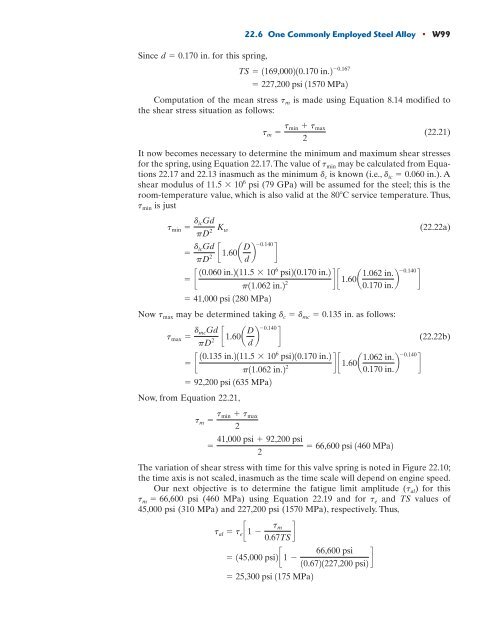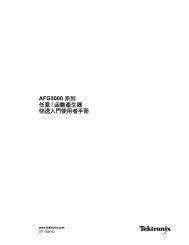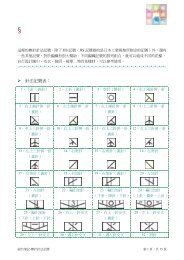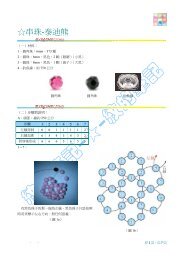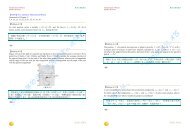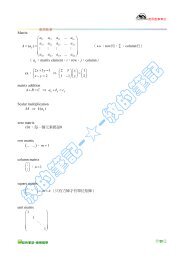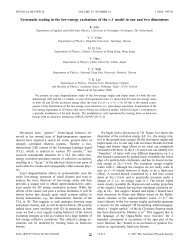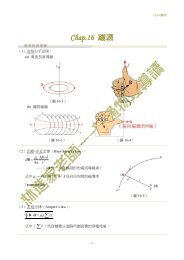Chapter 22 Materials Selection and Design Considerations
Chapter 22 Materials Selection and Design Considerations
Chapter 22 Materials Selection and Design Considerations
You also want an ePaper? Increase the reach of your titles
YUMPU automatically turns print PDFs into web optimized ePapers that Google loves.
Since d � 0.170<br />
in. for this spring,<br />
<strong>22</strong>.6 One Commonly Employed Steel Alloy • W99<br />
Computation of the mean stress tm is made using Equation 8.14 modified to<br />
the shear stress situation as follows:<br />
(<strong>22</strong>.21)<br />
It now becomes necessary to determine the minimum <strong>and</strong> maximum shear stresses<br />
for the spring, using Equation <strong>22</strong>.17.The value of may be calculated from Equations<br />
<strong>22</strong>.17 <strong>and</strong> <strong>22</strong>.13 inasmuch as the minimum is known (i.e., in.). A<br />
shear modulus of 11.5 � 10 psi (79 GPa) will be assumed for the steel; this is the<br />
room-temperature value, which is also valid at the 80�C service temperature. Thus,<br />
is just<br />
6<br />
tmin dc dic � 0.060<br />
t min<br />
Now may be determined taking dc � dmc � 0.135 in. as follows:<br />
t max<br />
t min � d icGd<br />
pD 2 K w<br />
� dicGd c 1.60 aD<br />
2 pD d b<br />
�0.140<br />
d<br />
� c 10.060 in.2111.5 � 106 psi210.170 in.2<br />
p11.062 in.2 2<br />
� 41,000 psi 1280 MPa2<br />
tmax � dmcGd c 1.60 aD<br />
2 pD d b<br />
�0.140<br />
d<br />
� c 10.135 in.2111.5 � 106 psi210.170 in.2<br />
p11.062 in.2 2<br />
� 92,200 psi 1635 MPa2<br />
Now, from Equation <strong>22</strong>.21,<br />
t m � t min � t max<br />
2<br />
TS � 1169,000210.170 in.2 �0.167<br />
� <strong>22</strong>7,200 psi 11570 MPa2<br />
t m � t min � t max<br />
2<br />
41,000 psi � 92,200 psi<br />
� � 66,600 psi 1460 MPa2<br />
2<br />
(<strong>22</strong>.<strong>22</strong>a)<br />
(<strong>22</strong>.<strong>22</strong>b)<br />
The variation of shear stress with time for this valve spring is noted in Figure <strong>22</strong>.10;<br />
the time axis is not scaled, inasmuch as the time scale will depend on engine speed.<br />
Our next objective is to determine the fatigue limit amplitude (tal) for this<br />
tm � 66,600 psi (460 MPa) using Equation <strong>22</strong>.19 <strong>and</strong> for te <strong>and</strong> TS values of<br />
45,000 psi (310 MPa) <strong>and</strong> <strong>22</strong>7,200 psi (1570 MPa), respectively. Thus,<br />
66,600 psi<br />
� 145,000 psi2c1 �<br />
10.6721<strong>22</strong>7,200 psi2<br />
� 25,300 psi 1175 MPa2<br />
d<br />
tal � te c 1 � tm 0.67TS d<br />
1.062 in.<br />
dc1.60 a<br />
0.170 in. b<br />
�0.140<br />
d<br />
1.062 in.<br />
dc1.60 a<br />
0.170 in. b<br />
�0.140<br />
d


